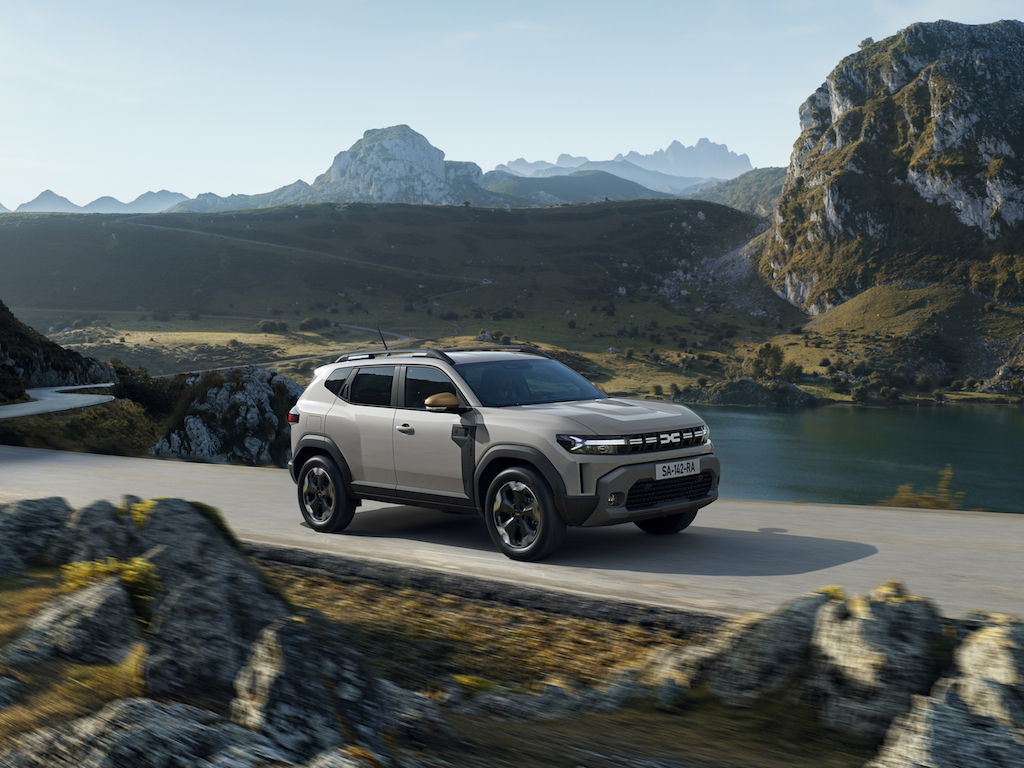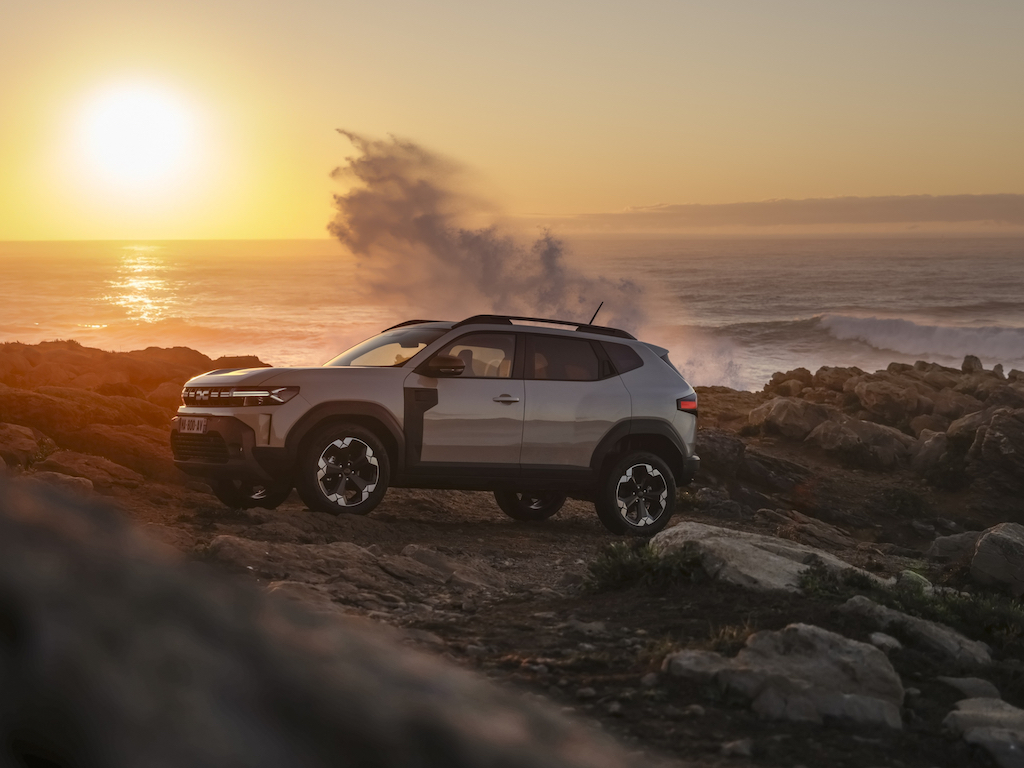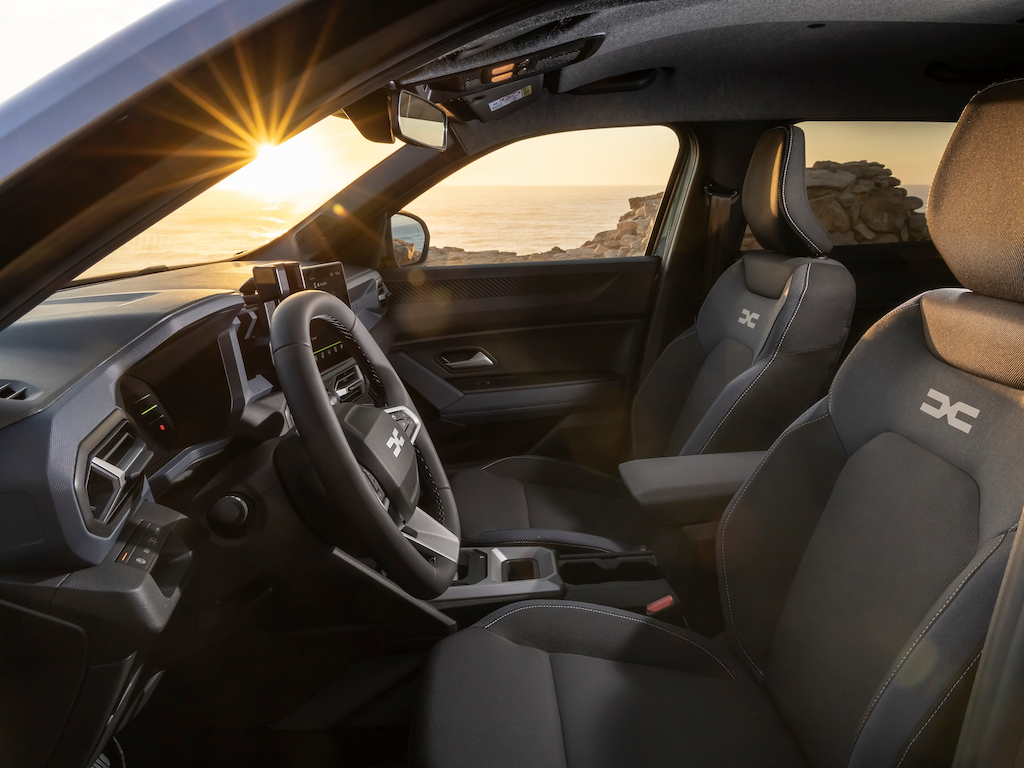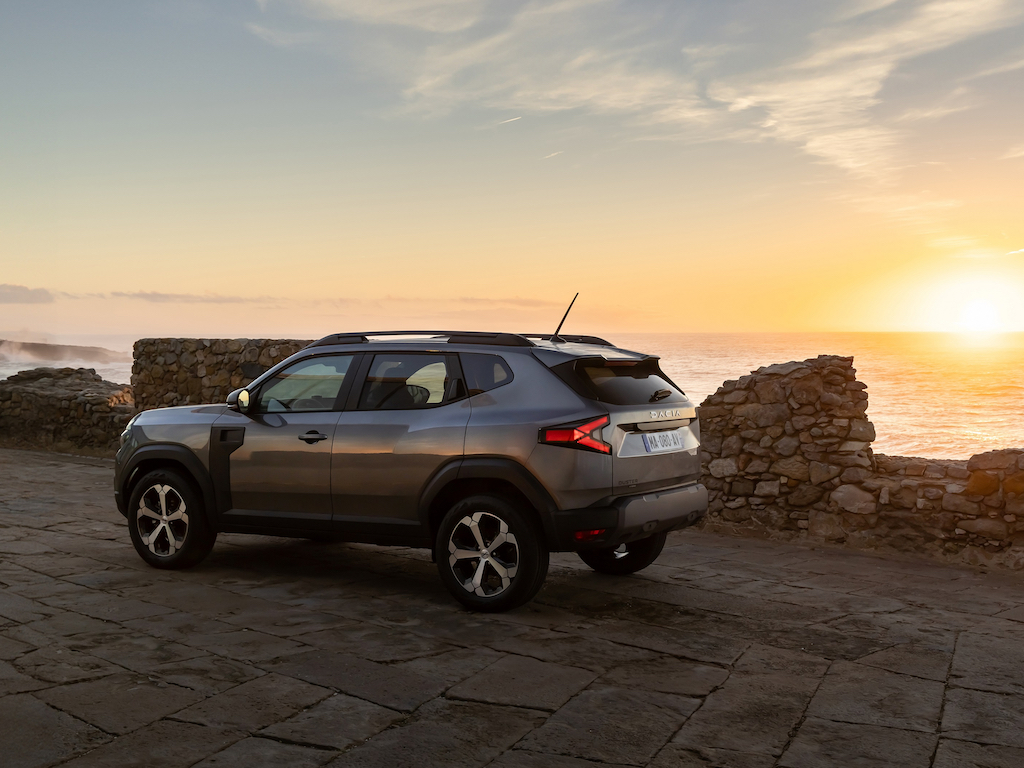New-gen Dacia Duster gets extra space and hybrids
Dacia has presented its brand-new Duster SUV, continuing its value-for-money focus but with new technologies, tougher design and a switch to a new platform and hybrid engines.
First launched in 2010 and now in its third generation, the Duster is a best-selling model, not only for the brand but also ranked as Europe’s highest-selling SUV across all segments in the retail market in 2022.
The new iteration ups the game – while it crucially “remains a family SUV providing the best value for money in its segment”.
Built on the Renault Group’s CMF-B platform – also used for the Dacia Jogger and Sandero alongside other group models such as the Renault Captur – it’s designed in line with the Dacia brand overhaul introduced last year. This is founded on three core values: ‘essential and cool’, ‘robust and built for outdoor adventure’ and ‘eco-smart: economical and ecological’.
Design takes a “stronger and more assertive” approach with a rugged look that features Y-shaped lighting signature, new grille, cladding on the wheel arches and beefier skid plates, drawing on the Bigster concept unveiled in 2021.
Sustainability is also a focus. The front and rear skid plates are dyed in the mass, meaning the plastic is already coloured when it is injected to make the part. Alongside the eco benefits of not using paint, Dacia says it benefits customers as scrapes and scratches won’t alter the original colour.
A new material called Starkle is used for the body cladding. Created by Dacia’s engineers and LyondellBasell’s chemists and first used on the Manifesto concept car, it’s designed to be robust but also up to 20% recycled while giving a mottled look.
Overall, roughly 20% of the plastic in the new Duster is recycled, up considerably on the segment average and an 8-point gain on the previous generation, according to Dacia. The brand is also no longer using leather and decorative chrome in all its models, which it says is down to eco reasons.
While it’s a similar length to before, the new Duster gains extra onboard space and also delivers a bigger boot – up from 442 litres to up to 472 litres for the 4×2 version. It also gets a new roof rack, able to hold up to 80kg and fastening onto the modular roof bars in the transverse position, or to aftermarket roof bars.
The switch to the CMF-B platform also enables new hybrid powertrains. These include the Hybrid 140 already seen in the Jogger, along with the Renault Clio. This full hybrid combines a 94hp 1.6-litre four-cylinder petrol engine with a 49hp motor and a starter generator to deliver 140hp. It’s married up with an automatic gearbox and able to drive in all-electric mode up to 80% of the time in cities, according to the carmaker, reducing consumption by 20% (mixed cycle) to 40% (urban cycle).
The line-up also includes the TCe 130 mild hybrid, which uses a 1.2-litre three-cylinder petrol engine with a 48V mild hybrid starter generator. The latter aids the internal combustion engine when the car starts or accelerates, reducing average consumption and CO2 emissions by about 10% compared to an internal combustion engine with equivalent power. It also boosts acceleration. It’s available with a six-speed manual gearbox and two- and four-wheel drive versions.
As before, Dacia is offering an LPG bi-fuel version, which delivers up to 1,300km (808 miles) of range (WLTP) with its two tanks holding 100 litres between them – 50 litres of petrol and 50 litres of LPG – and located so the LPG tank doesn’t affect boot capacity. The brand hasn’t announced which European markets will get this version.
The new Duster is also available with 4×4 Terrain Control transmission, which includes five driving settings, spanning Auto, Snow, Mud/Sand, Off-Road and Eco settings. The 4×4 version also comes with ground clearance of 217mm and offers approach and departure angles of
up to 31° and 36°, along with 24° for the ventral angle. It also comes with downhill speed control and a new All Road Info system displayed on the infotainment screen during off-road driving.
The line-up is also expected to again include a Duster Commercial version, although details haven’t been announced.
New technologies debut while the Duster is designed with a “more digital and more connected” interior.
Trim levels start with Essential, rising to the mid-level Expression and then split into the Extreme and Journey top trims – both available at similar prices but with the former taking a more lifestyle focus and the latter designed for “low-key elegance and comfort”.
All models come with Dacia’s YouClip invention, which enables drivers to fix accessories such as a tablet stand in specific areas in the passenger compartment. Essential trim comes with three clips, while the other grades feature five.
From Expression grade up, the Duster gets a 7-inch customisable colour digital dashboard, along with a new infotainment system with a 10.1-inch centre touchscreen as standard, plus wireless Apple CarPlay and Android Auto connectivity.
Journey and Extreme models also get a connected navigation system providing real-time traffic updates and a six-speaker Arkamys 3D Sound System.
Extreme models upwards also benefit from connected services, including over-the-air updates and maintenance checks via the MyDacia app, plus two USB-C ports at the front and two at the back. Upper trims also get a wireless smartphone charger as standard.
Cruise control/Speed limiter is now standard on all trims, while automatic low-beam headlights are available as an option.
New driver assistance systems, added to meet the latest European safety requirements, include automatic emergency braking, traffic sign recognition and speeding alert, rear parking assist, emergency stop signal, lane departure warning, lane keep assist, driver attention alert, and emergency calls (eCall).
Sales are due to start in 2024. Pricing hasn’t been announced yet but the Romanian brand says the new model will continue to offer the most affordable prices in its segment.





